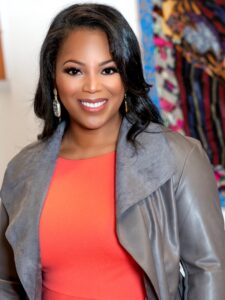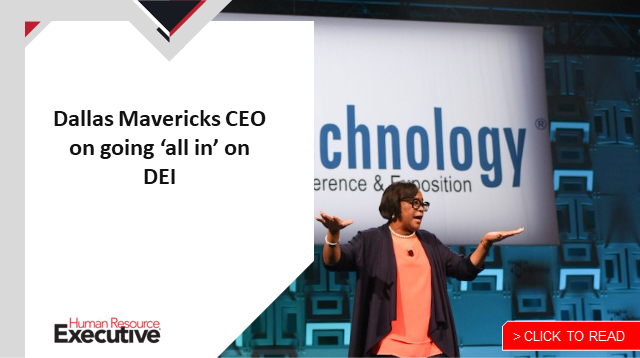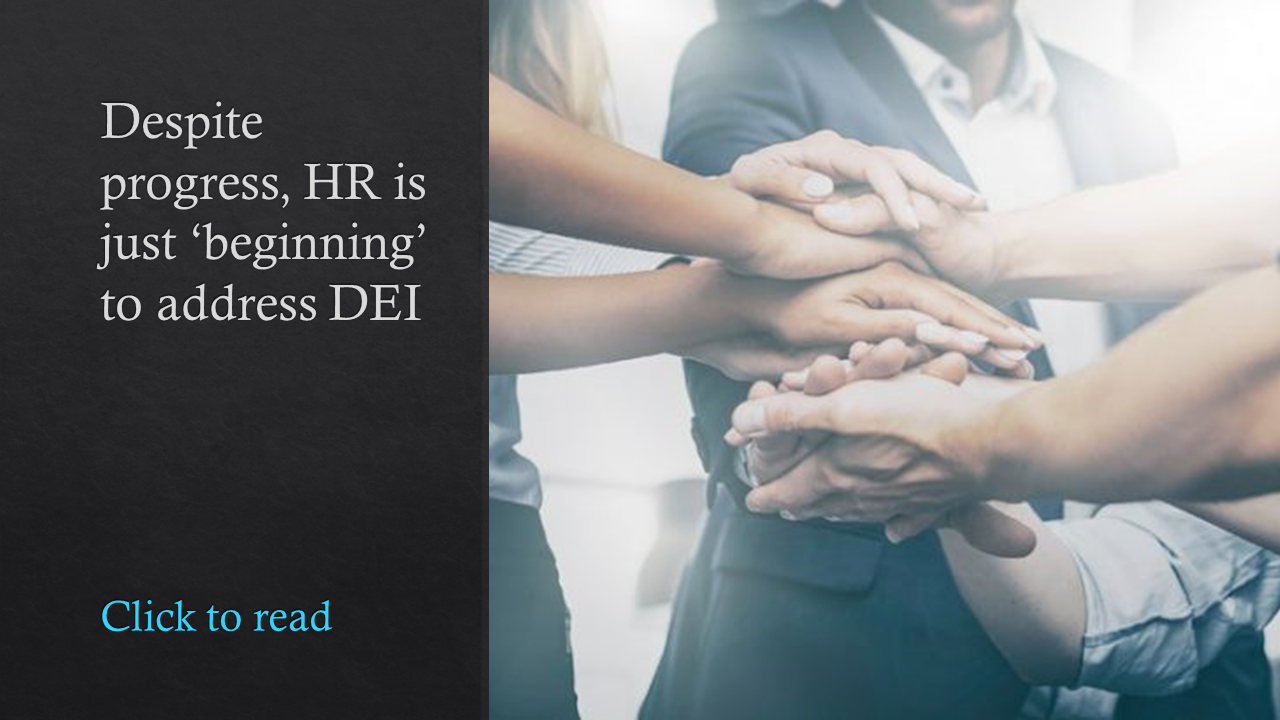A few years ago, the leadership at pizza retailer Papa John’s was mired in controversy.
In 2017, founder John Schnatter—who had publicly supported conservative causes and candidates, including Donald Trump—came under intense fire for public comments criticizing the National Football League’s handling of some players’ Black Lives Matter protests. Partnerships were severed, there were calls for boycotts, and Schnatter was ultimately ousted as CEO. He was later forced to resign as board chair after it was revealed he made racist remarks, which set off a very public legal battle between Schnatter and the company.
The brand image, however, couldn’t be repaired by a mere change in CEO—as subsequent reports pointed to deep cultural problems, including accusations of harassment left unchecked and a network of toxic leadership.
So, in 2020, when Kim Adams found out that the vice president of diversity, equity and inclusion, culture and engagement position she had been recruited for—through a confidential search—was actually at Papa John’s, it gave her significant pause.
“I was one, and my family was one, who boycotted the brand,” she says. “I was not impressed by the things I was seeing in the media.”
When the position was initially described to Adams, she says, she loved the profile of the company: It was rebranding, opening a new headquarters in Atlanta, working to become more inclusive, wanting to attract more diverse talent.

“Once I learned what company it was, though, I was like, ‘I have a pretty strong brand in Atlanta and I don’t know if I want to be associated with Papa John’s,’ to be very frank,” she says. If she was going to say yes, Adams says, she knew the company needed to meet a number of criteria, particularly that the commitment to inclusivity was authentic—and came from the top of the organization.
From the changes in leadership the company had undergone to her conversations with the CEO, CHRO and executive team, Adams says, she was reassured of that commitment. And, it was backed up by resources.
“A lot of times,” she says, “this [lack of investment] is an indicator that companies aren’t really committed [to DE&I].”
And once she started, Adams says, she was impressed by the “passion behind the DE&I work” exhibited by team members across levels who “want to tell an inclusive story” about Papa John’s.
Jackye Clayton, DE&I expert and vice president of talent acquisition and DE&I at software company Textio, says transformations like that underway at Papa John’s benefit from the transparency Adams says she has seen: “You have to acknowledge the elephant in the room,” Clayton says.
“You have to honestly and transparently acknowledge any spaces where DE&I initiatives are failing,” she adds, noting that leadership commitment is critical for success. “The buck stops not with the DE&I professionals; it stops with the CEO,” whom she says must continuously develop their understanding of DE&I, based on a deep connection to the needs of underrepresented employees.
 “They do not have to be DE&I experts but they do have to be willing to expand their knowledge of diversity and share the journey along the way,” Clayton says. “Today’s CEOs are approachable, relatable, fallible—and realize that the mistakes you make are part of learning.”
“They do not have to be DE&I experts but they do have to be willing to expand their knowledge of diversity and share the journey along the way,” Clayton says. “Today’s CEOs are approachable, relatable, fallible—and realize that the mistakes you make are part of learning.”
Rebuilding the strategy
As she acclimated to her role, Adams says, she has had many candid conversations about those mistakes, and the problems that existed in the company culture. Apart from necessary changes in leadership, Adams says, Papa John’s conducted a “deep diagnostic review of the culture from the lens of DE&I” and was intentional about “naming the problem,” not shying away from looking at both the challenges and opportunities of culture transformation.
Then, the focus became embedding DE&I across the people strategy: from hiring to onboarding to performance management. It was a strategy that had a sharp focus on training.
The entire executive team underwent inclusivity training, with actions they were accountable for as a result. Managers, directors and senior leaders also went through conscious inclusion training.
“We worked to build capability through training, teaching people how to recognize when there are issues and the opportunities that exist around inclusion,” Adams says.
One of those opportunities is elevating the DE&I conversation to a more global level. Previously, the organization’s Inclusion Resource Groups operated primarily out of its original headquarters in Louisville, Ky., but in the past few years, the company has worked to engage all of its locations—from the new headquarters in Atlanta to its U.K. headquarters and in between—and to build out the groups beyond corporate team members to include frontline store workers and drivers.
Papa John’s rolled out programs like its “Real Talks” and the “Day of Understanding”—to invite all team members to share experiences and understanding around such difficult topics as race and gun control and even some of the issues that had previously permeated Papa John’s, such as “bro culture.”
 “We created forums where team members could come together to openly engage in dialogue in a respectful way,” Adams says. “We weren’t having those conversations before and, so, people weren’t challenging where there was bad behavior. We’ve worked to create that space and that culture where people can do those things now.”
“We created forums where team members could come together to openly engage in dialogue in a respectful way,” Adams says. “We weren’t having those conversations before and, so, people weren’t challenging where there was bad behavior. We’ve worked to create that space and that culture where people can do those things now.”
Enhancing the diversity of the workforce is also a key piece of the puzzle. The company has been intentional about elevating diverse leaders; Adams says it now has one of the most diverse executive leadership teams in the pizza industry.
“We have phenomenal women leaders who have been playing a role in helping mentor men in the organization through our Inclusion Resource Groups, which is one of the ways we began to chip away at the [previous] culture to drive change,” Adams says.
Papa John’s has also invested significantly in new, diverse talent.
The RISE Internship program, for instance, was developed through a partnership with the United Negro College Fund, which allowed Papa John’s to welcome its first class of HBCU interns this summer. The effort, Adams says, brought a “phenomenal layer of diversity” to the company’s internship experience.
Its Dough & Degrees educational program, launched in 2019, was recently expanded to connect even more team members to free online learning: Employees gain access to the program—through which they can earn certificates, associate’s, bachelor’s and master’s degrees—after just 60 days on the job and only have to work as few as 10 hours per week. The vast majority of students enrolled in the program are frontline store workers.
 “It’s been an amazing driver from a DE&I perspective,” Adams says. “It’s helping us to engage more post-millennial, younger talent, especially those who have been challenged to afford college because of systemic issues. That’s a strategic play that is going to help us not only engage our current team members but to recruit more diverse team members as well.”
“It’s been an amazing driver from a DE&I perspective,” Adams says. “It’s helping us to engage more post-millennial, younger talent, especially those who have been challenged to afford college because of systemic issues. That’s a strategic play that is going to help us not only engage our current team members but to recruit more diverse team members as well.”
Textio’s Clayton called the rollout of Dough & Degrees a “brilliant” move.
Often, she notes, organizations publicly affirm a commitment to DE&I—but once diverse candidates get in the door, they find the “support, learning and development” opportunities to be scarce.
“It has been proven that inequitable access to education is one of the barriers to generational wealth,” she says. “So, it goes to prove that giving someone the ability to get a college education does not just positively impact the organization and the employee. It can impact the ability to obtain wealth for generations to come.”
As this work continues, Adams says, the company’s continuing culture transformation will include a heightened focus on the voice of the employee. Previously, leadership looked primarily at representative data to inform DE&I strategy; now, that focus is expanding to qualitative as well, such as through the Pizza Pulse surveys, which solicit anonymous feedback on everything from their wellness to the culture of inclusion.
“We’re leveraging this data to understand the voice of our team members and learn where we can scale things to drive improvement,” Adams says.
A ‘unique perspective’
The DE&I transformation at Papa John’s is work that is personal for Adams.
 Born and raised in Los Angeles, she had a “front row seat” as a teenager to the Rodney King riots, which she says was one of the “most formative” experiences of her adolescence, and also was “a degree traumatic” for her, as a young Black girl. When she was a senior in high school, her family moved to Fayetteville, Ga., largely prompted by the King fallout. It was a culture shock, coming from one of the nation’s most diverse cities to the largely monolithic, suburban environment.
Born and raised in Los Angeles, she had a “front row seat” as a teenager to the Rodney King riots, which she says was one of the “most formative” experiences of her adolescence, and also was “a degree traumatic” for her, as a young Black girl. When she was a senior in high school, her family moved to Fayetteville, Ga., largely prompted by the King fallout. It was a culture shock, coming from one of the nation’s most diverse cities to the largely monolithic, suburban environment.
“That stark contrast in those environments really heightened the desire within me at a young age to better understand different cultures, and it underscored that I wanted to advocate for underrepresented groups,” Adams says. “I wanted to do DE&I work, I just didn’t have the words at that time.”
She went on to study at the University of Georgia, where she was often the “only”—only Black person, only woman. It was a feeling that followed her into corporate America, where she held HR and DE&I leadership positions at companies including Marsh, Coca-Cola, Cox Enterprises and Equifax.
Her upbringing and career thus far, Adams says, have shaped how she approaches her work—and have been integral to how she is leading the DE&I transformation at Papa John’s.
“Like many people who have been ‘othered’ or ‘only,’ I have a unique perspective that has helped me to be more empathetic,” she says. “It’s helped me feel more comfortable lending my voice for people who might not feel as strong standing up and advocating for themselves. So, I’m working to create opportunities and giving people space to do that.”



